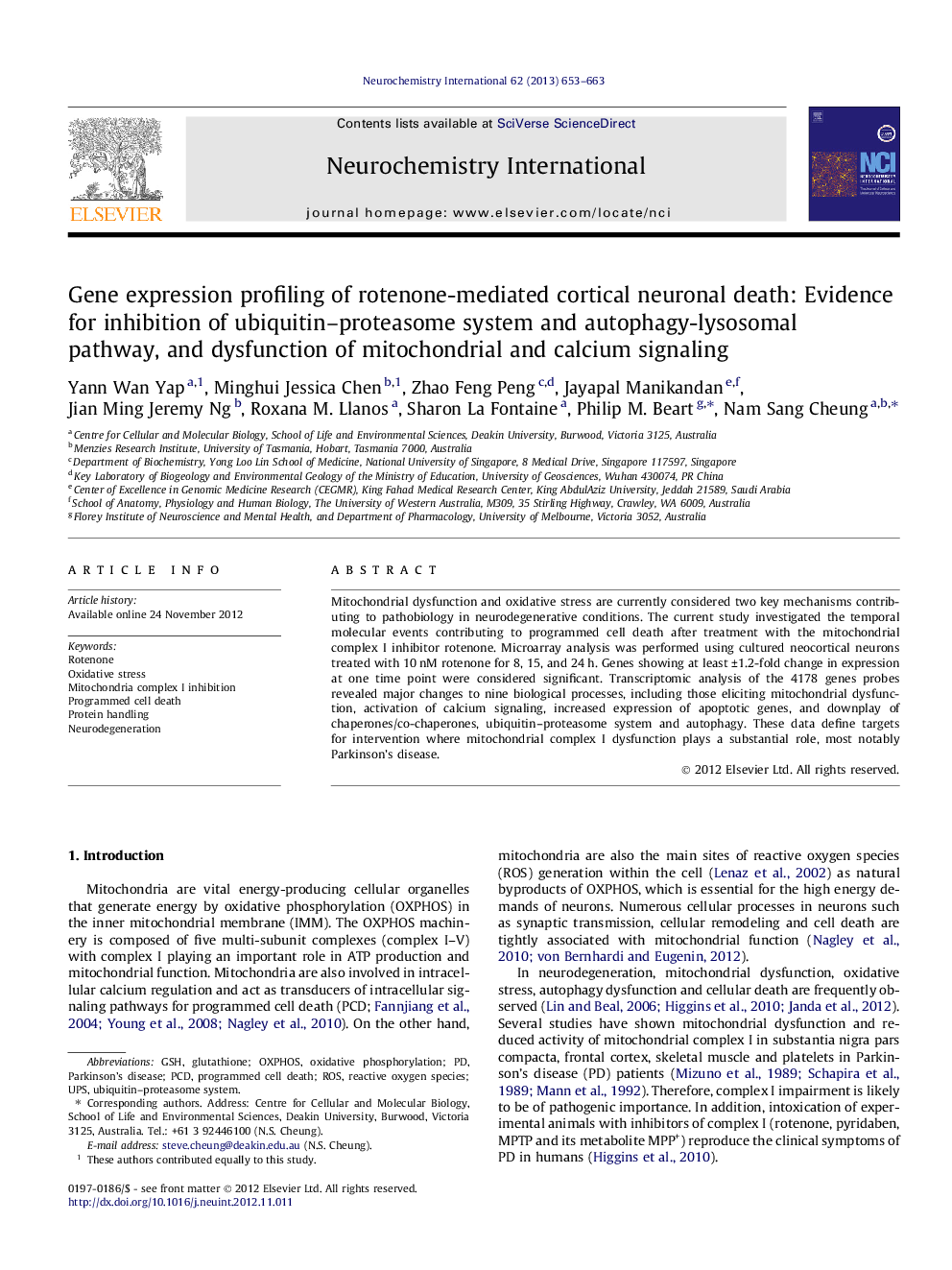| Article ID | Journal | Published Year | Pages | File Type |
|---|---|---|---|---|
| 10958088 | Neurochemistry International | 2013 | 11 Pages |
Abstract
Mitochondrial dysfunction and oxidative stress are currently considered two key mechanisms contributing to pathobiology in neurodegenerative conditions. The current study investigated the temporal molecular events contributing to programmed cell death after treatment with the mitochondrial complex I inhibitor rotenone. Microarray analysis was performed using cultured neocortical neurons treated with 10 nM rotenone for 8, 15, and 24 h. Genes showing at least ±1.2-fold change in expression at one time point were considered significant. Transcriptomic analysis of the 4178 genes probes revealed major changes to nine biological processes, including those eliciting mitochondrial dysfunction, activation of calcium signaling, increased expression of apoptotic genes, and downplay of chaperones/co-chaperones, ubiquitin-proteasome system and autophagy. These data define targets for intervention where mitochondrial complex I dysfunction plays a substantial role, most notably Parkinson's disease.
Keywords
Related Topics
Life Sciences
Biochemistry, Genetics and Molecular Biology
Cell Biology
Authors
Yann Wan Yap, Minghui Jessica Chen, Zhao Feng Peng, Jayapal Manikandan, Jian Ming Jeremy Ng, Roxana M. Llanos, Sharon La Fontaine, Philip M. Beart, Nam Sang Cheung,
